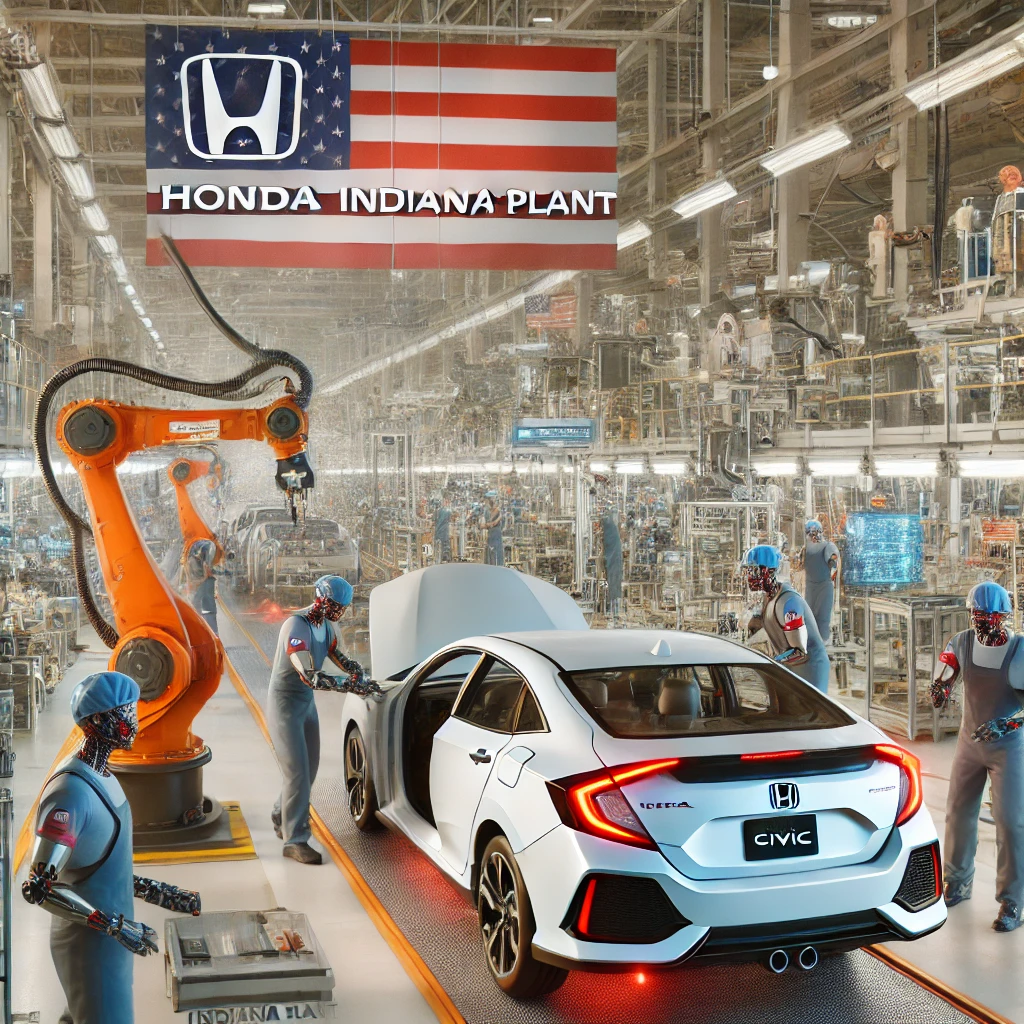Introduction
In a significant shift in manufacturing strategy, Honda has decided to produce its next-generation Civic in Indiana instead of Mexico. According to sources familiar with the matter, the decision is driven primarily by U.S. tariffs and trade policies, which have made Mexican production less viable. This move underscores the evolving landscape of global auto manufacturing and its intersection with economic policies.
This development comes at a time when automakers are reevaluating their supply chains to navigate trade disputes, inflation, and government incentives aimed at boosting domestic production. Honda’s decision could have far-reaching implications for both American workers and the broader auto industry.
Background: Honda’s Manufacturing Strategy
Honda has long maintained a strong presence in North America, with manufacturing plants in the United States, Canada, and Mexico. The company has historically used its Mexican facilities to produce vehicles for the North American market due to lower labor costs and favorable trade agreements.
However, in recent years, shifting trade policies—particularly tariffs imposed on imports—have forced automakers to reconsider their strategies. The U.S. government has implemented tariffs on vehicles and auto parts from various countries, increasing the cost of importing vehicles manufactured in Mexico.
Why Indiana?
Indiana has been a key manufacturing hub for Honda, with its Greensburg plant playing a crucial role in the production of the Civic and other models. Several factors make Indiana an attractive location for the production of the next-generation Civic:
- Avoiding Tariffs: By producing the Civic in the U.S., Honda can avoid costly tariffs on Mexican-made vehicles, ensuring competitive pricing.
- Government Incentives: U.S. federal and state governments offer financial incentives to companies that manufacture domestically, making it a financially sound decision.
- Supply Chain Stability: With global supply chain disruptions, manufacturing in the U.S. reduces reliance on cross-border logistics and potential delays.
- Skilled Workforce: Indiana has a well-trained workforce experienced in automotive manufacturing, ensuring high-quality production standards.
Impact on U.S. Economy and Jobs
The decision to produce the next Civic in Indiana is expected to create new job opportunities and strengthen the local economy. Analysts predict that this shift could lead to:
- The creation of hundreds, if not thousands, of new jobs at Honda’s Indiana plant.
- Increased demand for auto parts suppliers and related businesses in the region.
- Economic growth in the state due to higher employment and increased consumer spending.
For American workers, this move represents a significant win, especially amid concerns about job losses due to automation and outsourcing. Honda’s investment in Indiana signals confidence in U.S. manufacturing and its workforce.
Reactions from Industry Experts
Automotive industry analysts have mixed reactions to Honda’s decision. Some believe that the move was inevitable given the increasing costs associated with tariffs and trade restrictions. Others argue that while this benefits the U.S. workforce, it could strain Honda’s operations in Mexico, where the company has also invested heavily.
John Peterson, an automotive industry expert, stated:
“This decision is a direct result of economic policies designed to bring manufacturing back to the U.S. Honda is strategically positioning itself to minimize costs while taking advantage of government incentives.”
Meanwhile, some critics argue that shifting production from Mexico could impact Honda’s competitiveness in other global markets. Mexico’s lower labor costs have traditionally allowed automakers to keep prices down, and losing that advantage could lead to higher vehicle prices for consumers.
How This Affects the Auto Market
The auto industry is undergoing significant changes due to geopolitical tensions, evolving trade policies, and the push toward electrification. Honda’s decision aligns with broader industry trends, where automakers are prioritizing local production to mitigate risks.
Some key takeaways from this shift include:
- Higher Domestic Production: Other automakers may follow Honda’s lead in increasing U.S. production to avoid tariffs.
- Potential Price Adjustments: While tariffs are avoided, higher U.S. labor costs may slightly increase vehicle prices.
- Impact on Mexico’s Auto Industry: Mexico, a key player in auto manufacturing, may face economic setbacks as companies shift production elsewhere.
The Role of U.S. Tariffs in Shaping Business Decisions
Trade policies play a crucial role in shaping corporate decisions, and Honda’s move is a testament to that. The U.S. government has pushed for more domestic manufacturing through tariffs and incentives, and companies are adapting accordingly.
Recent trade policies, including renegotiations of the United States-Mexico-Canada Agreement (USMCA), have made it more expensive to manufacture vehicles in Mexico for the U.S. market. This has forced automakers like Honda to rethink their strategies.
Conclusion
Honda’s decision to produce the next-generation Civic in Indiana instead of Mexico marks a significant shift in the company’s manufacturing strategy. Driven by U.S. tariffs and economic incentives, this move highlights the impact of trade policies on the global auto industry.
While the decision is expected to create jobs and boost the U.S. economy, it also raises questions about future vehicle pricing and its effects on Honda’s operations in Mexico. As the auto industry continues to evolve, companies will need to navigate these challenges while balancing costs, regulations, and market demands.
Honda’s move is a clear indication that economic policies influence business decisions in profound ways. The coming years will reveal whether other automakers follow suit and whether this strategy proves beneficial in the long run.
